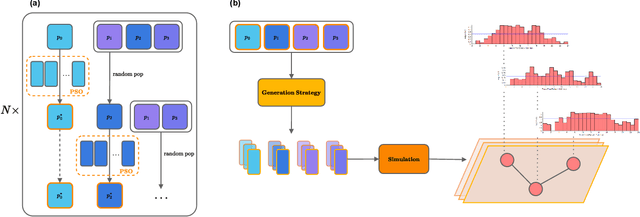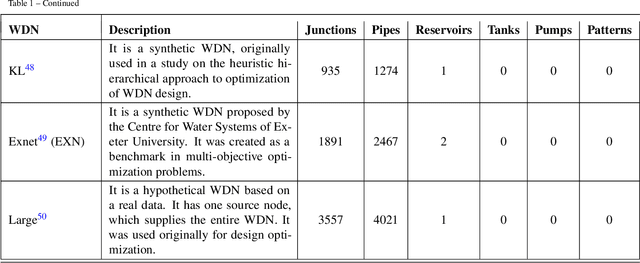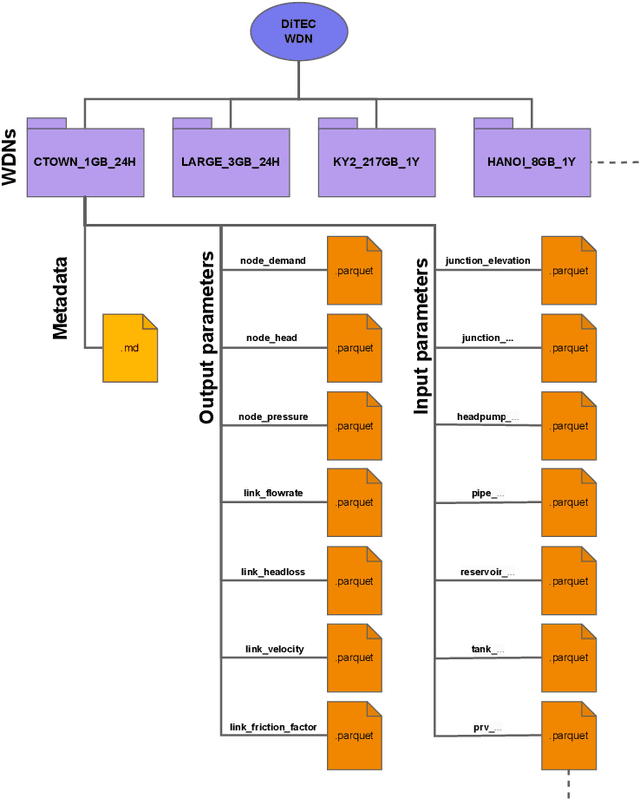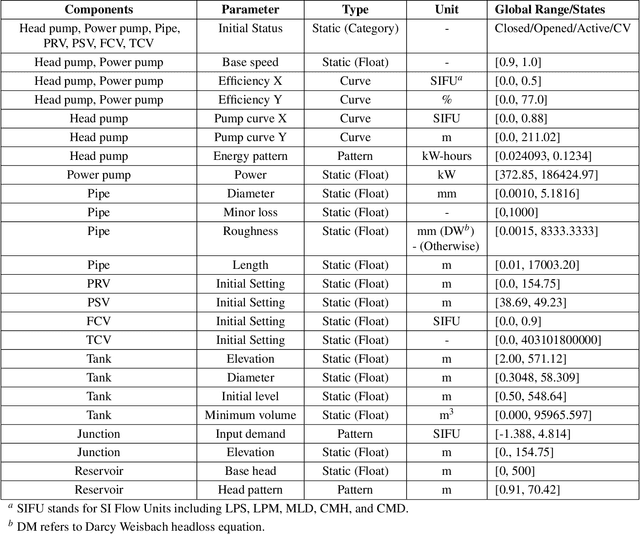Victoria Degeler
Neurosymbolic Association Rule Mining from Tabular Data
Apr 27, 2025Abstract:Association Rule Mining (ARM) is the task of mining patterns among data features in the form of logical rules, with applications across a myriad of domains. However, high-dimensional datasets often result in an excessive number of rules, increasing execution time and negatively impacting downstream task performance. Managing this rule explosion remains a central challenge in ARM research. To address this, we introduce Aerial+, a novel neurosymbolic ARM method. Aerial+ leverages an under-complete autoencoder to create a neural representation of the data, capturing associations between features. It extracts rules from this neural representation by exploiting the model's reconstruction mechanism. Extensive evaluations on five datasets against seven baselines demonstrate that Aerial+ achieves state-of-the-art results by learning more concise, high-quality rule sets with full data coverage. When integrated into rule-based interpretable machine learning models, Aerial+ significantly reduces execution time while maintaining or improving accuracy.
DiTEC-WDN: A Large-Scale Dataset of Water Distribution Network Scenarios under Diverse Hydraulic Conditions
Mar 21, 2025



Abstract:Privacy restrictions hinder the sharing of real-world Water Distribution Network (WDN) models, limiting the application of emerging data-driven machine learning, which typically requires extensive observations. To address this challenge, we propose the dataset DiTEC-WDN that comprises 36,000 unique scenarios simulated over either short-term (24 hours) or long-term (1 year) periods. We constructed this dataset using an automated pipeline that optimizes crucial parameters (e.g., pressure, flow rate, and demand patterns), facilitates large-scale simulations, and records discrete, synthetic but hydraulically realistic states under standard conditions via rule validation and post-hoc analysis. With a total of 228 million generated graph-based states, DiTEC-WDN can support a variety of machine-learning tasks, including graph-level, node-level, and link-level regression, as well as time-series forecasting. This contribution, released under a public license, encourages open scientific research in the critical water sector, eliminates the risk of exposing sensitive data, and fulfills the need for a large-scale water distribution network benchmark for study comparisons and scenario analysis.
Learning Semantic Association Rules from Internet of Things Data
Dec 05, 2024Abstract:Association Rule Mining (ARM) is the task of discovering commonalities in data in the form of logical implications. ARM is used in the Internet of Things (IoT) for different tasks including monitoring and decision-making. However, existing methods give limited consideration to IoT-specific requirements such as heterogeneity and volume. Furthermore, they do not utilize important static domain-specific description data about IoT systems, which is increasingly represented as knowledge graphs. In this paper, we propose a novel ARM pipeline for IoT data that utilizes both dynamic sensor data and static IoT system metadata. Furthermore, we propose an Autoencoder-based Neurosymbolic ARM method (Aerial) as part of the pipeline to address the high volume of IoT data and reduce the total number of rules that are resource-intensive to process. Aerial learns a neural representation of a given data and extracts association rules from this representation by exploiting the reconstruction (decoding) mechanism of an autoencoder. Extensive evaluations on 3 IoT datasets from 2 domains show that ARM on both static and dynamic IoT data results in more generically applicable rules while Aerial can learn a more concise set of high-quality association rules than the state-of-the-art with full coverage over the datasets.
Large-Scale Multipurpose Benchmark Datasets For Assessing Data-Driven Deep Learning Approaches For Water Distribution Networks
Apr 23, 2024

Abstract:Currently, the number of common benchmark datasets that researchers can use straight away for assessing data-driven deep learning approaches is very limited. Most studies provide data as configuration files. It is still up to each practitioner to follow a particular data generation method and run computationally intensive simulations to obtain usable data for model training and evaluation. In this work, we provide a collection of datasets that includes several small and medium size publicly available Water Distribution Networks (WDNs), including Anytown, Modena, Balerma, C-Town, D-Town, L-Town, Ky1, Ky6, Ky8, and Ky13. In total 1,394,400 hours of WDNs data operating under normal conditions is made available to the community.
AE SemRL: Learning Semantic Association Rules with Autoencoders
Mar 26, 2024



Abstract:Association Rule Mining (ARM) is the task of learning associations among data features in the form of logical rules. Mining association rules from high-dimensional numerical data, for example, time series data from a large number of sensors in a smart environment, is a computationally intensive task. In this study, we propose an Autoencoder-based approach to learn and extract association rules from time series data (AE SemRL). Moreover, we argue that in the presence of semantic information related to time series data sources, semantics can facilitate learning generalizable and explainable association rules. Despite enriching time series data with additional semantic features, AE SemRL makes learning association rules from high-dimensional data feasible. Our experiments show that semantic association rules can be extracted from a latent representation created by an Autoencoder and this method has in the order of hundreds of times faster execution time than state-of-the-art ARM approaches in many scenarios. We believe that this study advances a new way of extracting associations from representations and has the potential to inspire more research in this field.
Graph Neural Networks for Pressure Estimation in Water Distribution Systems
Nov 17, 2023Abstract:Pressure and flow estimation in Water Distribution Networks (WDN) allows water management companies to optimize their control operations. For many years, mathematical simulation tools have been the most common approach to reconstructing an estimate of the WDN hydraulics. However, pure physics-based simulations involve several challenges, e.g. partially observable data, high uncertainty, and extensive manual configuration. Thus, data-driven approaches have gained traction to overcome such limitations. In this work, we combine physics-based modeling and Graph Neural Networks (GNN), a data-driven approach, to address the pressure estimation problem. First, we propose a new data generation method using a mathematical simulation but not considering temporal patterns and including some control parameters that remain untouched in previous works; this contributes to a more diverse training data. Second, our training strategy relies on random sensor placement making our GNN-based estimation model robust to unexpected sensor location changes. Third, a realistic evaluation protocol considers real temporal patterns and additionally injects the uncertainties intrinsic to real-world scenarios. Finally, a multi-graph pre-training strategy allows the model to be reused for pressure estimation in unseen target WDNs. Our GNN-based model estimates the pressure of a large-scale WDN in The Netherlands with a MAE of 1.94mH$_2$O and a MAPE of 7%, surpassing the performance of previous studies. Likewise, it outperformed previous approaches on other WDN benchmarks, showing a reduction of absolute error up to approximately 52% in the best cases.
Too Good To Be True: performance overestimation in (re)current practices for Human Activity Recognition
Oct 18, 2023Abstract:Today, there are standard and well established procedures within the Human Activity Recognition (HAR) pipeline. However, some of these conventional approaches lead to accuracy overestimation. In particular, sliding windows for data segmentation followed by standard random k-fold cross validation, produce biased results. An analysis of previous literature and present-day studies, surprisingly, shows that these are common approaches in state-of-the-art studies on HAR. It is important to raise awareness in the scientific community about this problem, whose negative effects are being overlooked. Otherwise, publications of biased results lead to papers that report lower accuracies, with correct unbiased methods, harder to publish. Several experiments with different types of datasets and different types of classification models allow us to exhibit the problem and show it persists independently of the method or dataset.
Semantic Association Rule Learning from Time Series Data and Knowledge Graphs
Oct 11, 2023Abstract:Digital Twins (DT) are a promising concept in cyber-physical systems research due to their advanced features including monitoring and automated reasoning. Semantic technologies such as Knowledge Graphs (KG) are recently being utilized in DTs especially for information modelling. Building on this move, this paper proposes a pipeline for semantic association rule learning in DTs using KGs and time series data. In addition to this initial pipeline, we also propose new semantic association rule criterion. The approach is evaluated on an industrial water network scenario. Initial evaluation shows that the proposed approach is able to learn a high number of association rules with semantic information which are more generalizable. The paper aims to set a foundation for further work on using semantic association rule learning especially in the context of industrial applications.
Ontologies in Digital Twins: A Systematic Literature Review
Aug 29, 2023



Abstract:Digital Twins (DT) facilitate monitoring and reasoning processes in cyber-physical systems. They have progressively gained popularity over the past years because of intense research activity and industrial advancements. Cognitive Twins is a novel concept, recently coined to refer to the involvement of Semantic Web technology in DTs. Recent studies address the relevance of ontologies and knowledge graphs in the context of DTs, in terms of knowledge representation, interoperability and automatic reasoning. However, there is no comprehensive analysis of how semantic technologies, and specifically ontologies, are utilized within DTs. This Systematic Literature Review (SLR) is based on the analysis of 82 research articles, that either propose or benefit from ontologies with respect to DT. The paper uses different analysis perspectives, including a structural analysis based on a reference DT architecture, and an application-specific analysis to specifically address the different domains, such as Manufacturing and Infrastructure. The review also identifies open issues and possible research directions on the usage of ontologies and knowledge graphs in DTs.
 Add to Chrome
Add to Chrome Add to Firefox
Add to Firefox Add to Edge
Add to Edge